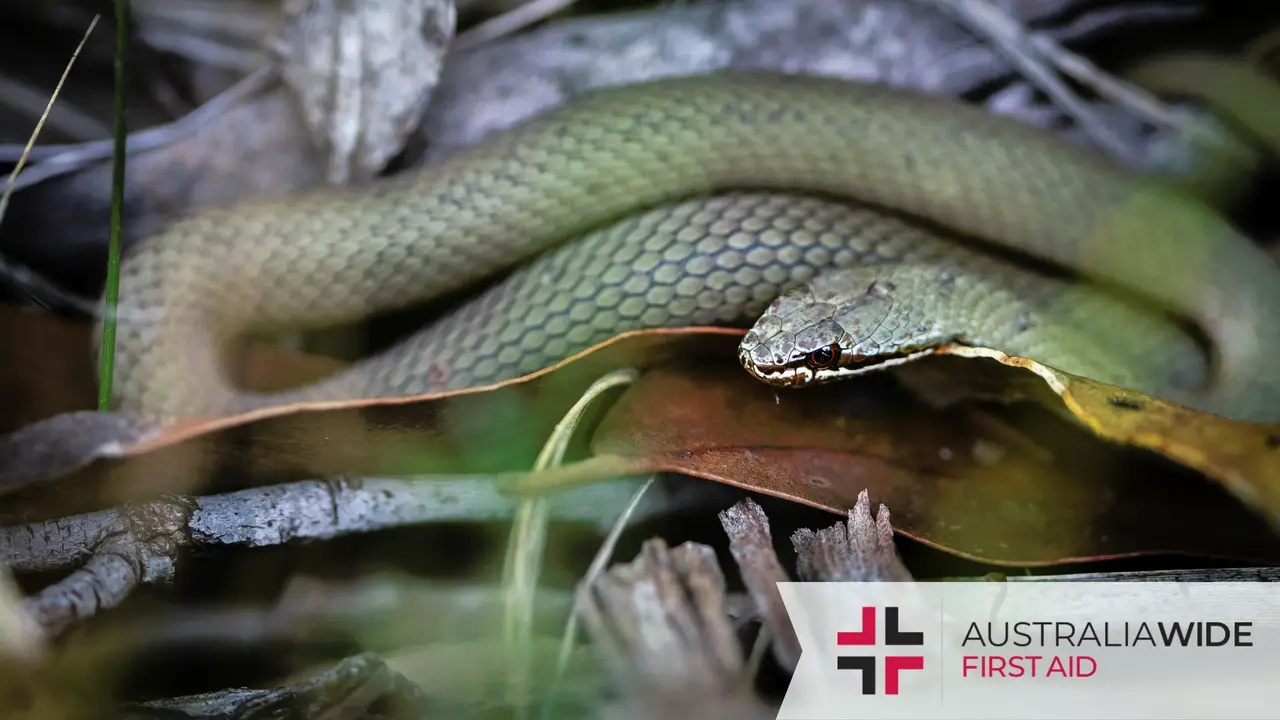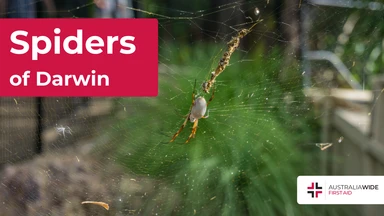The White Lipped Snake of Tasmania


The White lipped snake (Drysdalia coronoides) is a small species of snake found in Tasmania.
Due to their small size, they can heat up quickly and thrive in some of Australia's coldest environments, including above the snow line on Mount Kosciuszko.
And though they might look cute and cuddly, they are a venomous snake belonging to the Elapidae family, of which the Eastern brown is also a member.
This article will help you become better acquainted with the White lipped snake and how to treat their bites.
For hands-on experience with managing snake bites, enrol in one of our general or childcare first aid courses:
We have training locations in Tasmania and in every other state, capital city, and major town throughout Australia.
Also known as a Whip snake, the White lipped snake has the following identifying characteristics:
One of Australia's most cold-tolerant snakes, this species can be found in south-eastern parts of the mainland as well as Tasmania.
They generally shelter beneath rocks, logs, and other ground debris in the following habitats:
The White lipped snake feeds almost exclusively on small skinks, though they will occasionally prey on frogs.
Though this species is venomous, they are not considered highly dangerous to humans, as they:
In saying that, all snake bites should be treated as a medical emergency until proven otherwise by a doctor at a hospital.
To treat a snake bite, follow the DRSABCD action plan and apply the Pressure Immobilisation Technique, per our article on identifying and treating snake bites.
It is important to remember, snakes will never go out of their way to attack you. To avoid a snake bite, never attempt to approach, capture, or kill a snake at home or in the wild.
If you need a snake relocated from your home, contact a professional snake catcher, instead.
For hands-on experience with managing snake bites, enrol in one of our a href="https://www.australiawidefirstaid.com.au/courses/first-aid?utm_source=website&utm_medium=article&utm_campaign=white+lipped+snake">general or childcare first aid courses. We have training locations in Tasmania and in every other state, capital city, and major town throughout Australia.

March 11, 2025
Darwin, the tropical capital of Australia’s Northern Territory, is home to a rich diversity of wildlife - including an impressive array of spiders. From the sprawling webs of golden orb-weavers to the cryptic camouflage of trapdoor spiders, these arachnids play a vital role in the local ecosystem. While some may inspire fear, the majority are harmless and even beneficial, helping to control insect populations.

September 4, 2024
Cat bites, while often underestimated, can lead to serious health complications if not treated promptly and properly. Cats' mouths harbour a variety of bacteria that can cause infections in humans.

April 1, 2024
Encounters with wildlife can often be thrilling, but when it comes to the creature known as the drop bear, the experience can quickly turn dangerous. A sharp increase in recent attacks prompts the need for understanding proper first aid procedures in case of an attack.